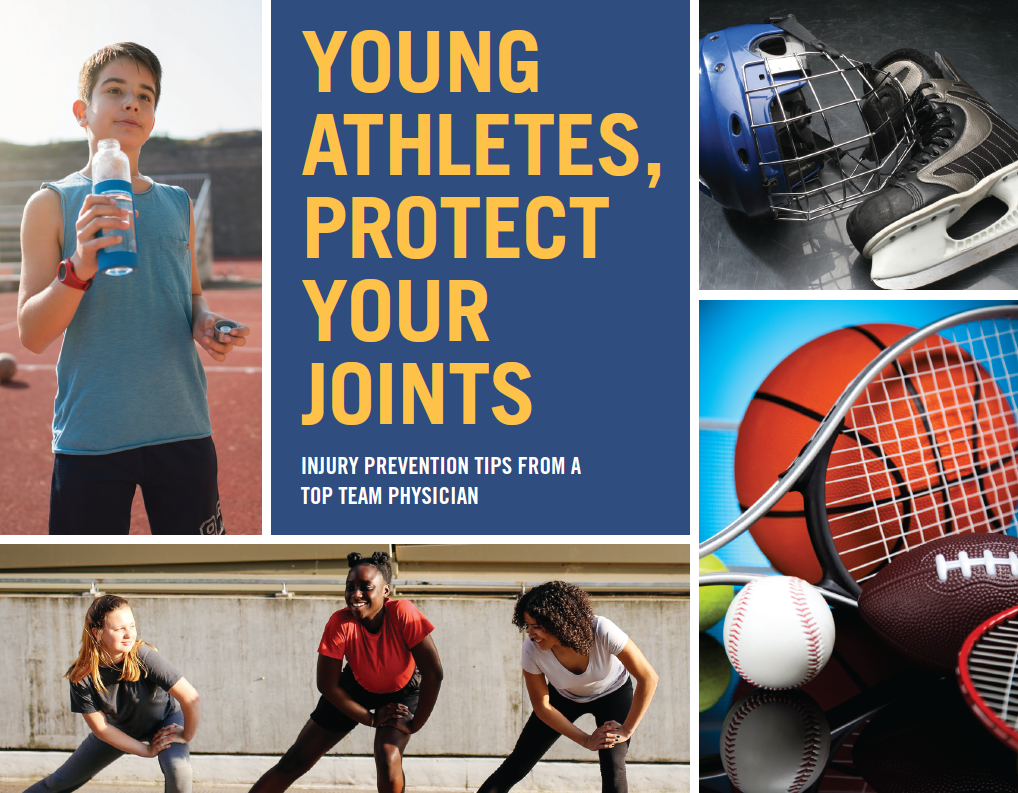
As the current Director of Orthopedic Surgery for the Philadelphia Flyers and the former team physician for the Philadelphia Eagles, Peter DeLuca, MD, has helped hundreds of elite athletes obtain peak performance and recover from injury.

Now, as an orthopedic surgeon with Cooperman Barnabas Medical Center and a member of RWJBarnabas Health Medical Group, Dr. DeLuca is using his experience to help athletes of all ages in the same way. He explains:
What’s the biggest injury risk young athletes face today?
One of the growing dangers I see for young athletes is sports specialization. It happens when parents and sometimes youngsters think they must play one sport—and only that sport—in order to perfect it. They mistakenly believe that it is the only way to become a college or professional athlete, but that’s not the case.
I recently asked a number of National Hockey League players how many months they played hockey when they were younger. Most told me the same thing: They hung up their skates in April and didn’t touch them again until August. If these world-class athletes reached the pros without playing hockey for 10 months a year, then there’s no reason a young athlete should play just one sport for that long.
What are the dangers of sports specialization?
Any time a young adult plays a sport, it puts stress on certain joints, such as the knee or shoulder, or even on certain structures of those joints. So, for example, if you spend 10, 11 or 12 months of the year playing baseball as a pitcher, the repetitive throwing will continually stress your shoulder and elbow, and something will eventually fail. That’s why most sports medicine physicians recommend that young athletes play at least one other sport. By playing, for example, football for three months, then basketball for four months, you’ll be working different muscles and reduce your risk for overuse injuries. Numerous studies have pointed to the dangers of sports specialization.
What are the most common shoulder injuries in young athletes?
Overuse injuries are the most common. These types of injuries typically take the form of tendinitis. They’re caused by sprains of the muscles and tendons around the shoulder and elbow. In general, the harder and more often you throw, the greater your risk for tendinitis.
Some young athletes want to play through their tendinitis, but they absolutely should not. Doing so can cause more damage and lead to more serious injuries like a tear of the labrum, which is the band of tissue that surrounds the socket of the shoulder joint. While physical therapy may resolve some labral tears, others may require surgery.
What are the most common knee injuries in young athletes?
Muscle strains are the most common, followed closely by anterior knee pain, which is discomfort around the kneecap. We see this more commonly in females than in males. It’s often caused by an anatomical issue where the kneecap doesn’t track properly, causing pain and instability. Sprains of the medial collateral ligament (MCL), located in the inner part of the knee, are the third most common injury.
A knee injury that we’ve seen greatly increase in incidence over the last several years is a tear of the anterior cruciate ligament (ACL), which is the ligament that connects the femur to the tibia. ACL tears can happen in any sport with a lot of pivoting and cutting. They happen more often in females who play soccer, basketball and lacrosse, and more often in males who play football, soccer and basketball. The ACL will not heal by itself, and you will need surgery. A young athlete who suffers an ACL tear will need at least nine months of recovery before returning to sports.
How can young athletes prevent injuries?
Most injuries occur because of fatigue. That’s why I advise young athletes to build endurance in all their muscles—from their feet all the way up to their pelvis, and then their core muscles, glutes, quadriceps and hamstrings. The stronger and more flexible you keep your muscles, the better you’ll ward off injuries.
Proper stretching is important. One good guideline: A prevention program called PEP (Prevent Injury and Enhance Performance) includes warm-up, stretching and strengthening exercises that can dramatically decrease the incidence of ACL tears.
Also, athletes should make sure to stay hydrated. When you’re dehydrated, your muscles don’t work as efficiently as they should, which increases your risk for strains and sprains.
Get Treated Like A Pro
The orthopedic and sports medicine team at Cooperman Barnabas Medical Center has a full complement of experts dedicated to the health and well-being of athletes of all ages. “We offer complete care, similar to what the pros receive,” says sports medicine and orthopedic surgeon Peter DeLuca, MD.
In addition to orthopedic surgeons, sports medicine physicians, certified athletic trainers and physical therapy practitioners, the medical center’s orthopedic team includes a sports nutritionist and a sports psychologist. The medical center also offers a concussion program to help create the safest return possible for people who suffer head injuries on the field or court.
To learn more about sports medicine at Cooperman Barnabas Medical Center, call 973-322-7005.